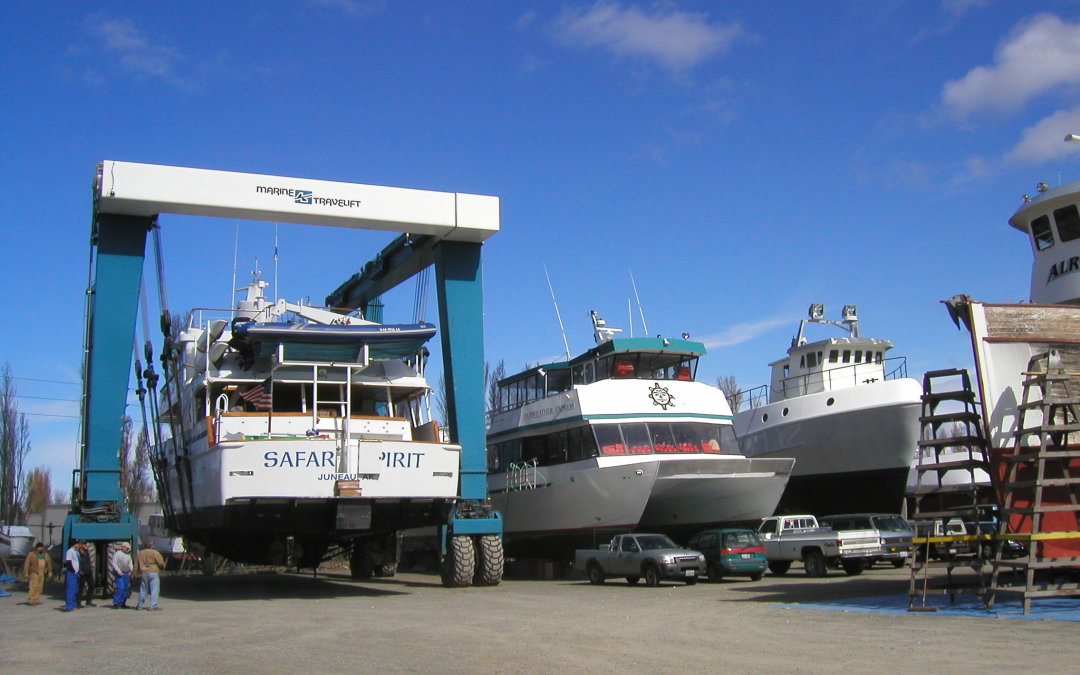by Larry Crockett, Port of Port Townsend Executive Director
2015 and Beyond: A Look Ahead at Looming Capital Costs
The Port of Port Townsend provides many important services to the residents of Jefferson County: facilities and services that support the local marine trades industry; public recreational opportunities in the form of marinas, boat ramps and an RV park; and air and water transportation links to the Puget Sound region.
Maintaining and replacing the public infrastructure that supports these services is a significant challenge.
During periods of economic and fiscal stress, it can be difficult to adequately fund both our operations and necessary capital maintenance and replacement projects
Economic Outlook
The economic outlook for Jefferson County for 2015 and into 2016 is one of “hanging on to what we have” (Washington State Department of Employment Security). Any growing sectors are going to come at a premium as the numbers point to an economy that is showing little noticeable change. This mirrors our position, as the Port will do well to continue to maintain and operate its existing facilities and infrastructure. Moreover, the new economic normal suggests that obtaining federal and state funding for capital projects is likely to remain highly constrained and competitive.
Capital Investment Needs – Present & Future
Earlier this year, Executive and Maintenance staffs identified anticipated near-term investment needs for some of the Port’s major infrastructure systems. This process detailed nearly $4.4 million in capital replacement projects and approximately $1.4 million in capital maintenance projects needed over the next 1-5 years.
While the Port should be credited for making some important investments in recent years (e.g., Point Hudson Marina renovation, Commercial Basin, A/B Dock replacement, Airport Runway Improvements, 80 Ton Lift Pier, etc.) there are some harsh fiscal and economic realities hindering our efforts going forward. Construction and energy-related costs have increased significantly over the last 10 years, far outpacing the rate of inflation. As a result, future capital expenditures will not repair as much Port infrastructure as they once did because the Port’s available revenues have simply not kept pace with increasing costs.
Our Issues Are Not Unique
Our situation mirrors that of the nation, and many state and local governments: underfunded legacy infrastructure. Many of our facilities, like those of the nation as a whole, were built during a “golden age” of infrastructure construction and subsequent economic growth between the 1930s and early 1960s (e.g., Point Hudson and the Boat Haven were constructed during this period). The challenge is easily stated, but difficult to remedy: we lack sufficient resources to restore, replace, or repair aging infrastructure. Obviously, this aging infrastructure is the backbone of the Port and enables us to generate the revenues we depend upon to fund ongoing operations, and theoretically, to repair and replace infrastructure at the end of its useful life. Port Maintenance Staff has done an admirable job over the years in conducting routine and ordinary maintenance to preserve and extend the useful life of our assets.
A Way Forward
Prepare A Multi-Year Capital Plan
To begin to address these mounting maintenance and replacement issues, I am recommending that the Port develop, adopt and implement a multiyear capital facilities plan.
Prepare for Tough Choices
The recent adoption of the 2015 budget is only the beginning. Preparation of a multiyear capital facilities plan and future budgets will require the Commission to make some very difficult choices. Put bluntly, our current revenue streams and tax receipts are wholly inadequate to fund the long-term maintenance, repair, and replacement of the suite of facilities and equipment we presently operate.
This suggests that we will be required to undertake management responses that may include a combination of all of the following:
- Significantly increasing rates and fees to recoup costs;
- Critically evaluating, and where possible cutting, administrative and overhead expenses;
- Surplusing non-performing assets that do not advance our central mission of economic development;
- Aligning expectations with fiscal realities – be prepared for lower levels of service, and facilities that are functional, not necessarily beautiful.
With challenge comes opportunity, and my staff and I look forward to working to ensure the continued financial stability of the Port of Port Townsend, and a vibrant and healthy local economy.

